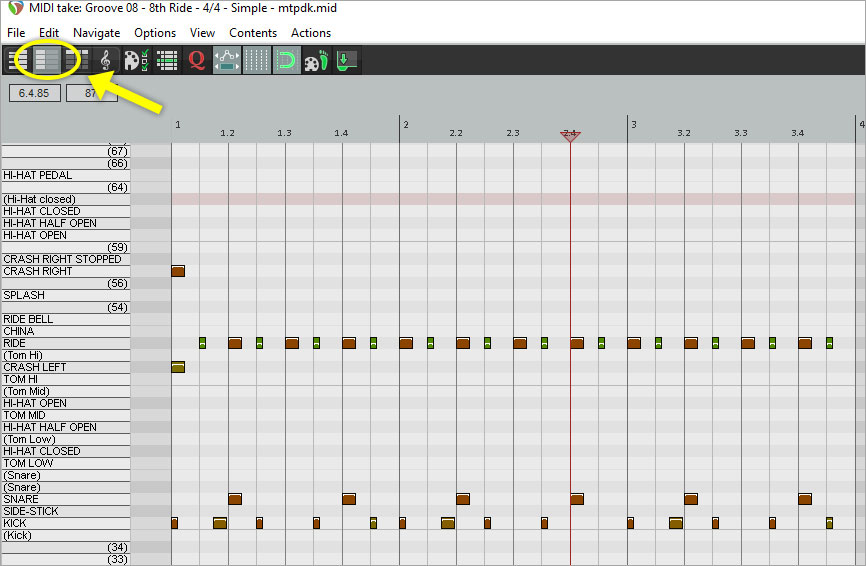

Insert a tempo marker with this tempo, at 1:1 measure/beat (this is arbitrary the suggestion gives you an empty bar to start with)Īlign the first downbeat of the audio with this tempo marker Undo this step and set the Project Tempo to this tempo.

We'll see tempo markers on either side of the selection. Run the action (and close the action window if necessary). It may be helpful to assign a keyboard shortcut (Shift Ctrl C in the video) if you expect to tempo map frequently. Open the action list and select "Create measure from time selection (detect tempo)". This is so you don't get drastic changes from Reaper's default 120 each time you add a tempo marker. Changing the entire project's Time Base could cause other items to shift.Īlso, MIDI items may need to be set to "Ignore Project Tempo" if they too were recorded in free-time, disregarding the grid (synced with audio). If it is set to Beats, this will stretch the audio when the tempo is changed.
#Reaper make a click map how to#
SonicAxiom shows how to create a toolbar item to do this at 13:52 in the video. Make sure the Time Base for the track is set to Time. If you choose other shortcut keys, then of course you'll need to modify the instructions as appropriate. "SWS/BR: Move closest tempo marker to mouse cursor (perform until shortcut released)" įor these instructions, I have used the same shortcut keys as in the video. "SWS/BR: Move closest GRID LINE to mouse cursor (perform until shortcut released)" Two SWS actions are required for this method:
#Reaper make a click map free#
Please feel free to correct if I've missed anything. I hope you don't mind I've created a quick text overview of the process. Thanks very much for putting this together. If you need to batch-warp songs, I hope you're a patient type of guy. If you just need to tempo-map a song from time to time, it's not too much of a pain to go through it the way I'm showing it in the video. It's probably a matter of taste which way you go. You could easily mess up the whole tempo-mapping. When I used his method three years ago, it was quite tricky to correct marker positions. So in the end, you still have to look at virtually every marker prior to warp and the time saving factor melts away. It's recommended to revisit the markers before running his action to achieve acceptable precision. Afterwards, you have to run his custom action that will warp the whole song according to the markers you dropped. There's a alternative method described by Bevosss somewhere on the forum where you can simply tap and drop markers in on-the-fly on every downbeat while playing back the song. I'm wondering if there is some way to make this part easier and faster. This part can be pretty tedious, depending on the recording. Then:Īdjust each tempo marker to line up with measures of the audio (by ear).

That all takes maybe a couple of minutes. Move the audio file so that the first downbeat of the song is inline with a tempo point. I copy/paste those, then copy/paste the 20 points, 40 points, etc. This gets me 10 measures worth of tempo envelope points (on master track). Run a custom action consisting of 10 repetitions of the following actions: Insert time signature/tempo change marker at edit cursor, Move edit cursor forward one measure. Hit play and tap in a tempo in the transport (it helps to have a rough tempo to begin with). Since I want midi on the drum track to stretch to tempo changes, but I don't want the audio file to stretch, setting the timebase at the track level is helpful for my purposes. If the project timebase is changed instead (in project settings), everything will be affected. Set track timebase to, time (prevents audio file from stretching when changing bpm), and insert the audio file. I'm looking for a quicker way to do tempo mapping for the purpose of creating backing drum tracks for songs that I am learning.


 0 kommentar(er)
0 kommentar(er)
